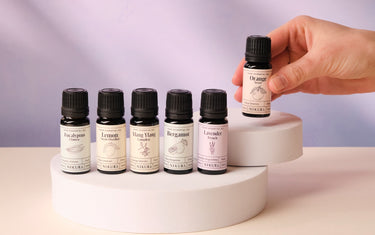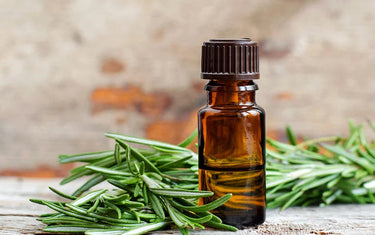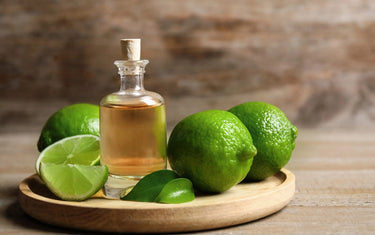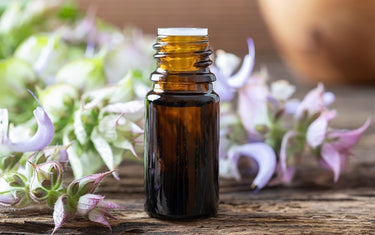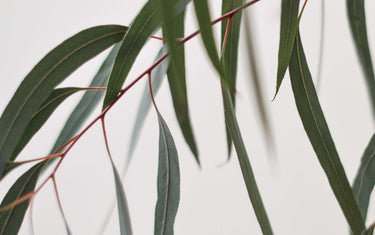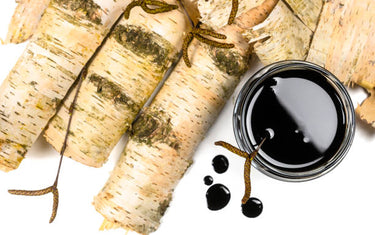5 min read / 27 January 2022 / Laura Garvin Gomez
Benefits and Uses of Cajeput Oil
Cajeput essential oil can protect our health, relieve pain, and clear blocked airways.

Native to Australia and Southeast Asia, the cajeput tree has been used in traditional medicine by Malaysians and First Nation Australians for many years.
Cajeput was particularly celebrated in these societies for its ability to combat respiratory properties and relieve pain.
In modern aromatherapy, cajeput oil is said to retain its ancient properties, as well as the ability to cleanse and brighten skin, and repel insects.
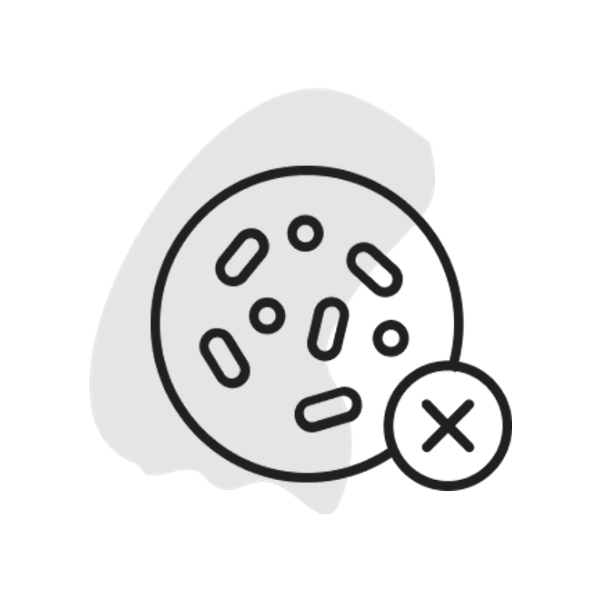
What is Cajeput Essential Oil?Occasionally referred to by the botanical name Melleuca Cajuputi, cajeput essential oil comes from the steam distilled leaves and branches of the cajeput tree. It can also sometimes be known by a number of other names, including cajuput and kajuput among other variations. Cajeput has a fresh, camphorous scent and is pale yellow in colour. Cajeput oil is commonly compared to eucalyptus as a result of its refreshing aroma, though cajeput tends to have a sweeter note with a soft fruitiness. It is also a member of the tea tree family. |
What are the benefits of Cajeput Essential Oil?
Despite its frequent comparison with other, arguably more popular essential oils, cajeput has its own impactful list of benefits that are certainly worth celebrating and utilising in your day to day.
Some of the most common cajeput essential oil benefits include:
- Antiseptic abilities
- Pain relieving qualities
- Respiratory relief
- Insect repellent

Is cajeput essential oil an antiseptic?
Cajeput is a powerful oil and should always be diluted heavily when used in skincare, as too much can result in irritation.
When used in its correct quantities, however, research has shown that cajeput oil has impactful antiseptic properties that can help treat skin conditions and prevent infections.
Components of cajeput oil can also help attack harmful bacteria and keep skin clear and healthy, while a 1992 study points to cajeput’s possible effects for cleaning minor cuts and scrapes – preventing them from infection.
Some people have even found cajeput oil to be an anti-inflammatory, which could help to reduce redness and inflammation in the skin - however scientific research on this benefit is less well-established.

Does cajeput oil relieve pain?
Cajeput oil is occasionally used in dentistry to help relieve pain in the gums after surgery, and some people recommend it as an effective treatment for menstrual cramps.
Not only is cajeput oil good at cleaning the skin around painful areas, but in slightly stronger concentrations it can help to distract the body from the feeling of pain and reduce the sensation.
This is likely due to a component in cajeput oil called cineol which creates a feeling of warmth on the skin, similar to a mild irritation, that distracts from the pain beneath.
However, cineol can be irritating for some sensitive skin types, and so cajeput oil should always be patch tested before being used for pain relief.

Can cajeput oil help clear sinuses?
Cajeput oil is related to tea tree and eucalyptus, and so shares the same expectorant properties as these two infamous essential oils.
Used as an ingredient in many leading decongestant products, cajeput has the ability to shift mucus blocking respiratory tracts and to clear airways - fighting the symptoms of many respiratory conditions including the flu and common colds.
Inhaling cajeput oil is a great way to allow for easier breathing as a result of congestion as well as battling lingering cough or cold symptoms.

Will cajeput essential oil repel insects?
Popular in its native Australia for battling pests, cajeput oil is a known insect repellent.
It can naturally repel bugs such as mosquitos and helps to protect the skin from potentially painful or inflamed bites.
Some people have also found it useful for relieving symptoms of itching around bug bites and soothing the skin.

How to use Cajeput Essential Oil
Aromatherapy
The refreshing sweetness of cajeput is a great alternative to eucalyptus or tea tree, and it can be equally powerful in removing mucus from the respiratory tract and allowing for easier breathing.
Its stimulating nature is also great for shaking off the sluggishness that comes with cold and flu symptoms, so adding a few drops to your diffuser while your feeling unwell can be a great way to reawaken your energy levels.
If you’re struggling from insects flying around your home, particularly in the summertime, cajeput may be able to deter these unwanted guests while keeping a cooling, welcoming freshness in the air.
Bath
If you’re really feeling bunged up, taking a hot bath using cajeput essential oil can be doubly impactful for clearing your sinuses, as the steam can carry the oil more easily into your airways as well as provide its own levels of decongestion.
Skincare
Since cajeput is a known antiseptic and antibacterial oil, its benefits in skincare are second to none if you’re looking for a natural alternative to commercial cleansers.
This is particularly true if you have any redness or irritation on the skin as a result of acne or other common abrasions, as cajeput’s anti-inflammatory properties can help soothe and heal these areas overtime.
Make sure to always dilute your cajeput with a carrier oil before use and perform a patch test.
Haircare
Some sources claim that the skin-cleansing elements of cajeput can lend themselves to haircare as well, though research is still limited.
Applying a few drops of cajeput oil to your hair with a carrier oil or adding it into your regular shampoo or conditioner can help keep the scalp healthy and possibly improve hair growth.
Insect repellent
Keep pests out of your home by creating an effective bug spray using cajeput essential oil, water, and an emulsifier - like dish soap.
Spray regions where pests are most prominent or use during the summer seasons for a chemical-free repellent.

The History of Cajeput Essential Oil
Cajeput essential oil was extremely revered by Australian natives for its antiseptic properties as well as for the treatment of aches and pains.
It was first introduced to Europe in the seventeenth century, where it was particularly valuable for colds, flu, and chronic rheumatism, and was even prescribed as a treatment for cholera.
Cajeput remained a very rare and valuable oil for many years, and was first mentioned as an important asset to modern aromatherapy in 1876.

Cajeput oil is a great alternative to oils such as eucalyptus and tea tree. Its unique pain-relieving properties and potent expectorant abilities make it a useful addition to any medicine cabinet.
|
Product Name |
100% Pure Cajeput Essential Oil |
| Botanical Name | Melaleuca Cajuputi |
| Scent Type | Fresh |
| Benefits & Uses | Fresh, Anti-Inflammatory, Decongestant |
| Suitable for Diffusers? | Yes, this cajeput essential oil is perfect for diffusers. |
| Suitable for Candles and Soaps? | Yes, this cajeput essential oil is perfect for candle and soap making. |
| Extraction Method | Steam Distillation |
| Bottle Type | Tamper proof and UV resistant |

